by Peter Gelderloos
We’re saturated by a hegemonic assumption: green energy megaprojects are our only hope for the future. But on these mountain paths, perched above the sprawling cities of a runaway urbanism and the massive hydroelectric dams built by the fascist regime, futuristic shepherds follow in the footsteps of anarchist guerrillas, illuminating a completely different way to shape the world we depend on for our survival.
An image from the future
The twisted skeletons of dead trees cover this hill and all the hills nearby. Shortly after it happened, someone nailed small beams of wood to dozens of the trees, horizontal bars to turn them into crosses, giving the effect of a mass graveyard. Grasses and hardy shrubs are coming up to carpet the graveyard, but at my feet I can still see the charcoal black of the wildfire that ripped through here seven years ago.
I’m standing outside of Sant Salvador de Guardiola, a small town in central Catalunya fifty kilometers from the Mediterranean coast, at the crossroads of two futures. The dead forest is one future. Desertification is a probable scenario for much of the Iberian peninsula (just as it is for alarming swathes of North and South America, the Sahel in Africa, and the Asian interior). As the climate warms and rainfall patterns are interrupted, ecosystems here are drying up, and mercenary agricultural and industrial practices aren’t giving them the breathing room they need in order to adapt. Catastrophic wildfires are becoming more common, and the earth might not be able to bounce back.
But amidst the embers, life doesn’t stop trying. There is another future to be found in the earth beneath our feet, the life it keeps drawing out, its history, and our role in all of it. All we need to do is pay attention. Listen. Learn from it.
The metropolitan shepherd
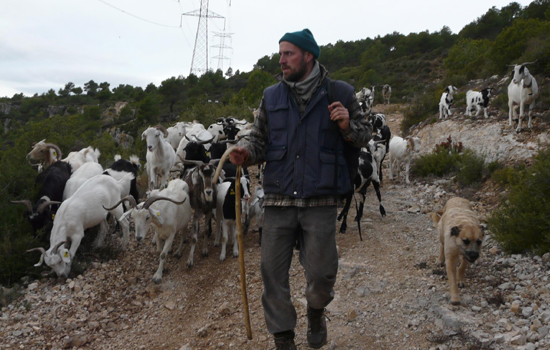
Edu Balsells with his goats and dogs, inside the boundaries of metropolitan Barcelona (credit: Peter Gelderloos)
Edu Balsells is on the front line of this war between futures. Edu is a shepherd. He himself doesn’t have much hope for the future, not even the future of his profession, yet what he does is incredibly relevant for the world to adapt as the geological period (the Quaternary) that has hosted the entire timeline of the human species dies an agonizing death.
Together with two dogs, Edu tends a flock of sheep. He has a little cabin in the woods, right next to the pen where the sheep spend most nights.
Stop.
If you’re imagining an idyllic, rustic setting, you’re doing it wrong.
Let’s start again. Just up the path from Edu’s cabin, you can catch a glimpse of one of the cities that make up the greater metropolitan area of Barcelona, home to five million humans. Edu spends half of every year guiding his sheep through a buffer zone, about a hundred meters deep, that winds across the slopes between the city’s outer suburbs and the forests that are still permitted to grow on the hilltops. The local government pays him to graze here. Shepherds, it turns out, are fifty percent cheaper than mowers.
“The city pays us to protect the suburbs from the forest but as far as I’m concerned, we’re protecting the forest from the suburbs,” Edu says with a mix of earnestness, humor, and pique.
All of Europe’s forests were decimated at one point or another as various civilizations expanded. Our current civilization, like many others, places a great deal of importance on the dichotomy between humans and nature. Mainstream efforts at protecting the environment have always been predicated on understanding humans as something outside of nature, and the conservationism that arose from this understanding was inaugurated with a wave of expropriations targeting poor and racialized humans, as documented by historians like E.P. Thompson and Vandana Shiva.
But most forests around the world, and definitely those around the Mediterranean, have evolved together with humans, as well as other animals like goats and sheep that also have a close relationship with our species. The putatively natural, wild forests that have been allowed to grow up by benevolent government administrations in the last few decades are little more than biodiversity-poor powder kegs. They would be suffering a health crisis even if it weren’t for the increasingly severe droughts plaguing the lands on all sides of the Mediterranean.
Edu Balsells explains to me that goats are more suited to clearing out a forest because of their robust diet. They eat the brush and shrubs and low-hanging branches, allowing for a more spacious, mature forest to set in, one that will have small fires as part of its natural cycle, but not cataclysmic fires that kill all the trees and other creatures, and lead to severe erosion. You have to keep goats on the move, he adds, or they will eat literally everything. But with his current job of maintaining a strip of healthy grassland at the city’s edge, he focuses on sheep. Muntanyesa sheep to be exact, an old breed that arose amidst the migrations of flocks from the coast and flocks from the mountains.
Edu’s sheep don’t rely on the destructive international soy industry for food. Most of their diet comes from the forest itself, which they help to transform into a functioning carbon sink while also fertilizing it and protecting it from catastrophic wildfires. In other words, what Edu and the sheep are doing, together, is a cutting edge, effective step towards food autonomy, emissions reductions, taking carbon out of the atmosphere, increasing biodiversity and reforestation, and protecting human life and homes.
Statist specialization, capitalist insanity
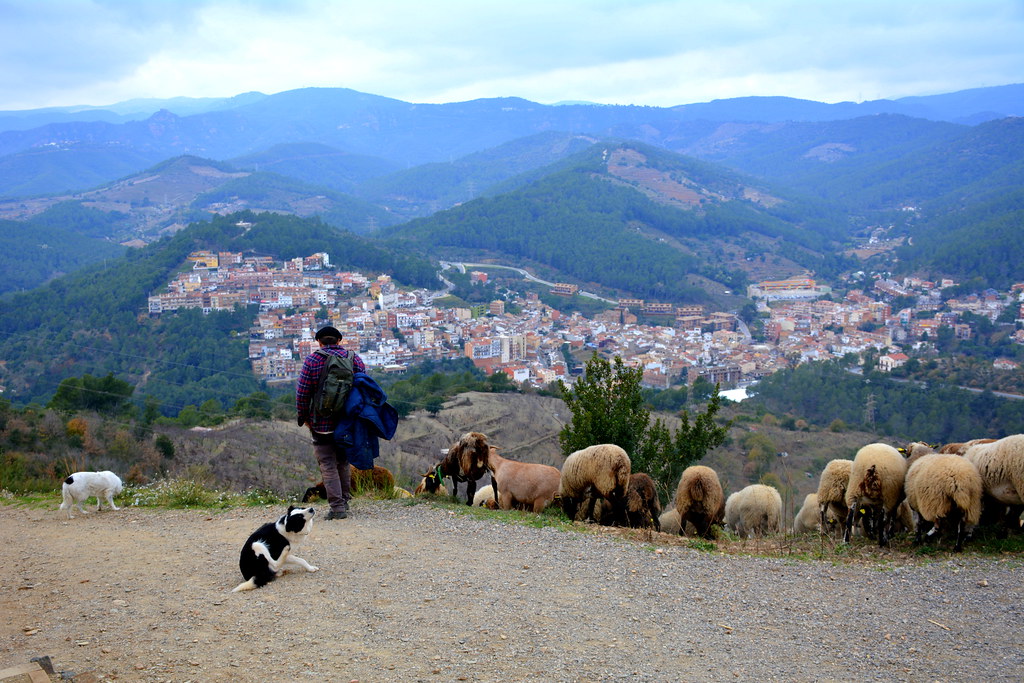
(credit: Angela Llop)
Despite how brilliant his life project is, Edu doesn’t see much hope in the future of what he is doing. A large part of it comes down to how hard it is to get even local governments to allow this kind of activity. To them, good technology comes with blinking lights, lucrative contracts, and kickbacks, not patterns of movement choreographed between humans and other species and perfected over millennia. Edu and his sheep are throwbacks, anti-modern, and all the dominant visions of progress, whiteness, and prosperity hinge on banishing people like Edu to the peripheries and banishing his sheep to industrial warehouses or at best rural pastures far from the cities.
The State is also based on the dichotomy between humans and nature, and municipal governments tend to designate the natural areas that shepherds could thrive in as zones for nature sports. Well tended flocks won’t present any problems to people taking a walk, nor to the old folks who collect asparagus in the spring or mushrooms in the winter, but the same cannot be said for the high-paying enthusiasts of mountain biking and motocross.
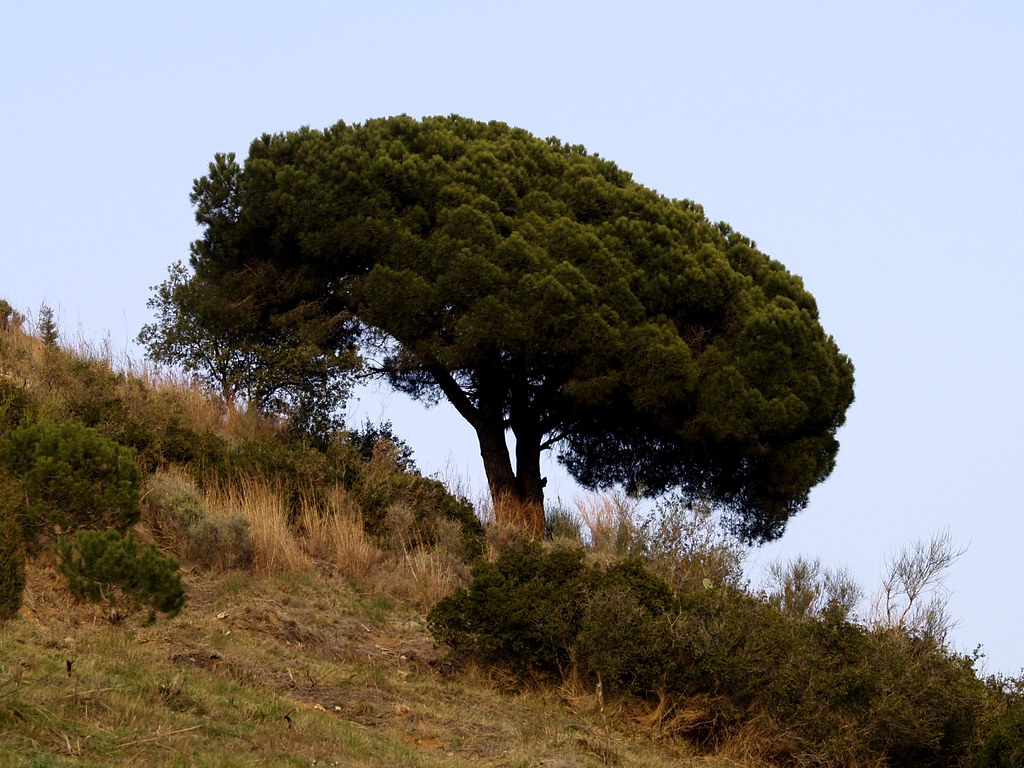
(credit: Ferran Turmo Gort)
Unsurprisingly, the market is also unsupportive. In a reasonable society, the wool from all those sheep would be used to produce clothing, but instead it sits in a giant heap outside the cabin. “Do you know anyone who could use it?” Edu asks me during a break from our interview. “If you can bring a truck in, you can have it.” The fatal flaw with the wool is not a question of quality, it’s a question of color. The muntanyesa sheep grow wool that is off-white. That’s the only problem. Industrial manufacturers of woolen clothing will only buy wool that is perfectly white, and such wool only comes from sheep that are specially bred or even genetically modified to produce it, sheep that in the process become extensions of a global industrial apparatus, far too delicate to do the foresting work that Edu’s sheep do, dependent on chemical-saturated soy from Argentina or the Amazon.
This sad fact reminds me of the giant hole that exists in the island of Madagascar, a scar from the mining of titanium dioxide, which is an essential product used to make sure that things like toothpaste are perfectly white. The thing is, I can’t recall aficionados of the L.L. Bean catalogue ever dressing in immaculate white clothing. All the articles of woolen wear I can find on the market boast rustic colors, prominent among them, off-white.
In other words, capitalism throws away large quantities of perfectly good wool or drives nearly to extinction the healthy traditional sheep breeds that produce it, and instead finance a gigantic technological apparatus to produce sheep totally dependent on that apparatus and totally destructive to the planet, to grow wool that is perfectly white that can then be dyed the same color as the mountains of wool they throw away.
Edu makes poverty wages. He only does what he does out of love and perseverance. The system is designed in a way that doing what we actually need to do to save us is discouraged at best, and criminalized at worst.
Social war, war on the planet
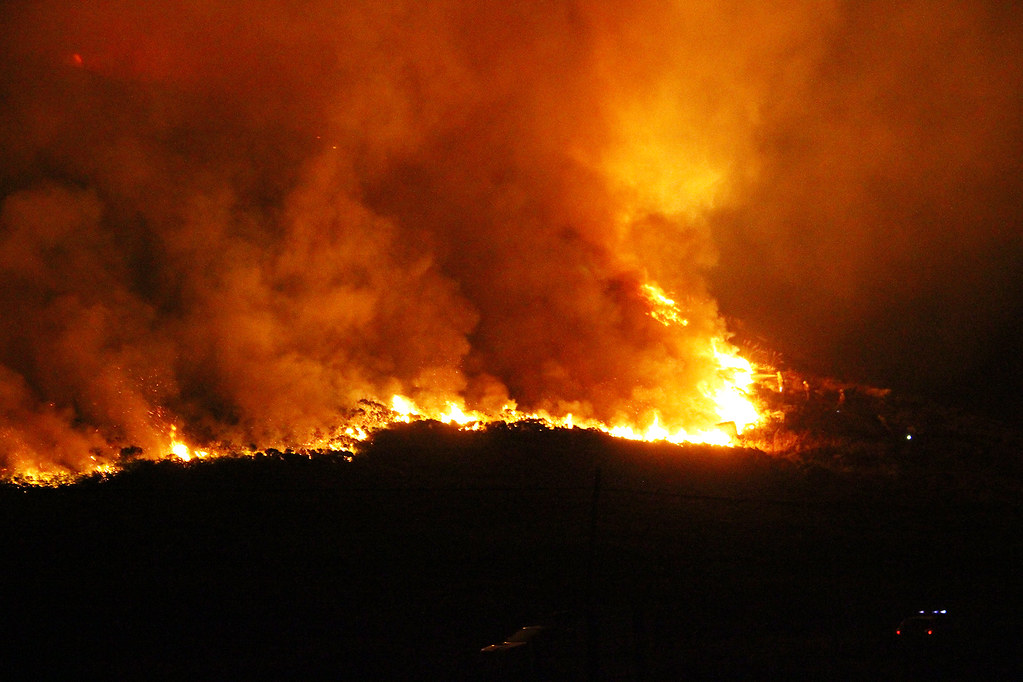
A 2016 wildfire in Galicia
Social war is a concept given a more precise meaning by the anti-authoritarian feminist André Léo after the bloody repression of the Paris Commune. Insurrectionary anarchists developed it into a theoretical framework in the ’80s and ’90s. It’s a concept I have tried to make my own contributions to with regard to state formation, in Worshiping Power (2017), and the ecological crisis in The Solutions Are Already Here (2022). Some of the most basic implications of this theory are that no state will wither away; that an ineluctable fault line of social conflict is the State against society, and the State is therefore a protagonist of history, a thinking institutional complex hardwired to seek social control by constantly reengineering the very shape of society and the structure of the terrain to favor surveillance and command; that capitalism is in fact dependent on and subsequent to this state-building activity.
Social war theory builds off of (and is also validated by) the strategic work of state and military planners who developed a counterinsurgency methodology to guide the colonial wars being fought by Britain and France in Kenya, Ireland, Algeria, and Indochina, and then by the United States in Vietnam as well as Detroit and Los Angeles. More recently, David Kilcullen has refined counterinsurgency methodology considerably, with recent applications by the US occupiers in Iraq.
Clearly, social war theory demands to be placed in an anticolonial framework, something a growing number of radicals are doing today. Indigenous resisters and thinkers like Silvia Cusicanqui, Vine Deloria Jr., and Klee Benally have long insisted that colonialism cannot be viewed as a strictly human affair. One of the colonizer’s first and most consistent activities is to attack and shape the relationship between humans and the rest of the living world. Therefore, social war theory must find its completion in the realization that the social war constitutes a war on nature. And this doesn’t mean understanding nature as an inert backdrop, a passive geography that is mapped and sculpted. It means understanding ourselves as a part of nature rather than something outside it. It means that just as the State constitutes an unending war on society, the State constitutes an unending war against our relationship with the rest of the natural world.
Our counterattack is the commons
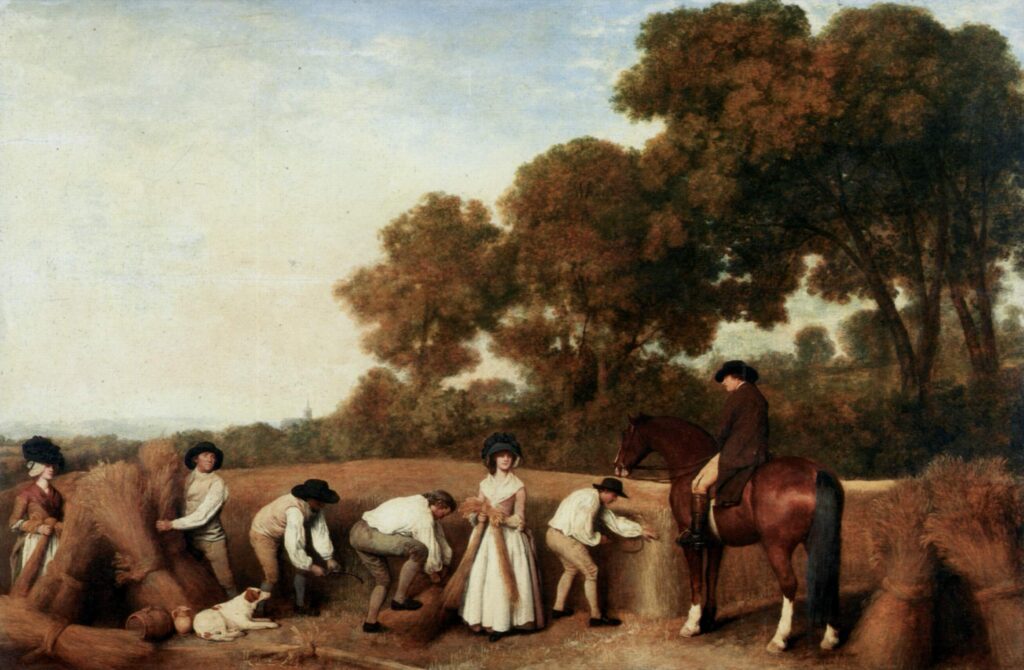
‘The Reapers’ by George Stubbs, 1785
Edu and his sheep are only inside Barcelona’s metropolitan shadow for half the year. At the end of the spring, they join up with other pastors and flocks to participate in one of the oldest continuous alimentary practices in the Mediterranean world: the transhumance.
A nearly forgotten word in English, the transhumance is when humans and their flocks migrate in accordance with the seasons, taking advantage of fresher pastures and more seasonally appropriate climates. In this area, they trek up to the high Pyrenees to spend the summer, but all over the world where humans feed themselves in part through pastoralism, they practice some kind of transhumance. According to some researchers, Edu among them, this cyclical migration of humans and flocks is behind the sharing of certain cultural traits from the Zagros mountains in Iran to the Galician massif on the edge of the Atlantic. The transhumance is a practice that thwarts the perennial efforts of states to build nations estranged by borders and immobilized by sedentary, easy-to-surveil lifestyles. It is also a practice that is vital to certain forms of agriculture, and antithetical to others.
It comes down to whether we’re dealing with an agriculture of the commons or an agriculture of property. Property-based agriculture is a relatively recent experiment, and isn’t working. In fact, it is failing more spectacularly than probably any scheme for growing food in human history.
The property regime sheds all the complexity of relations, connections, and obligations, and instead divides land into parcels and reduces ownership of it to a single entity, whether an aristocrat, a plantation owner, the State, a corporation, or a bank. This legal fiction of land having an owner is a way of policing and eradicating the dense web of relations we all have with the land, in the real world, and for that reason we can analyze it as a counterinsurgency strategy designed to produce isolation.
The seminal Whigs and Hunters by E.P. Thompson (1975) details the war on the commons as a counterinsurgency operation waged by the State. By removing forests from the commoning relationship, the State expands its war-making capacity by assuring a reliable supply of timbers for building a global fleet of warships, slave ships, and other ships of commerce. Simultaneously, the modern State enlists the loyalty of the old aristocratic class by expanding the private property regime. More recently, David Algarra Bascón (2015) has conducted similar research in the Catalan context, showing similar patterns.
In the real world, however, the State’s pretension that a living being can be isolated from other living beings isn’t working out.
In a system of commoning where political and economic powers have forced some degree of separation and parceling, the land still does not fully belong to a single owner. The well-to-do farmer or landlord must recognize the need and obligation of the shepherd and flock to occasionally pass through, opening a path to their summer or winter pastures, eating the chaff, but also refertilizing the fields.
This is extremely important, it turns out. Property-based agriculture still has not figured out a way to fertilize fields. Lately they have taken to industrial scale mining and shipping synthetic chemicals halfway across the planet, at a huge cost in the fuel burned for production and transportation, as well as the algae blooms killing off aquatic ecosystems the world over (and endangering another food source). Despite this colossal effort, one-third of industrial fields worldwide have become infertile in the last few decades and much of the rest are on the way out.
The commons are not just an artifact of a bygone agricultural system, nor are they an inert place we lost. Commoning is a practice of relating with the world, and it still exists today, among determined holdouts like Edu Balsells and other shepherds, and in sudden explosions of solidarity, as when people need to ensure their survival when so-called natural disasters lay bare government apathy and incompetence. The anarchist practice of mutual aid is a way of recreating the commons, wherever we may be, by pooling material resources and on a metaphysical level remembering that we are all related.
Championing and reinvigorating the commons is our best bet for surviving the ecological crisis produced by capitalism. And if we’re talking about survival, we need to remember that the deaths began a long time ago, many of us have been lost already, and many forms of life and species have already been extinguished.
How can we bring back the commons? After all, people didn’t just give up on commoning voluntarily. There was a great deal of State and settler violence involved, all around the world.
In the continuation of this essay, we’ll look at how commoning is also our best tool for overcoming state repression.
Peter Gelderloos is an independent researcher, writer, and social movement participant. He is the author of The Solutions are Already Here: Strategies for Ecological Revolution from Below, How Nonviolence Protects the State, Anarchy Works, Worshiping Power: An Anarchist View of Early State Formation, and other titles. His works have been translated into fifteen languages. You can follow his work on Surviving Leviathan.


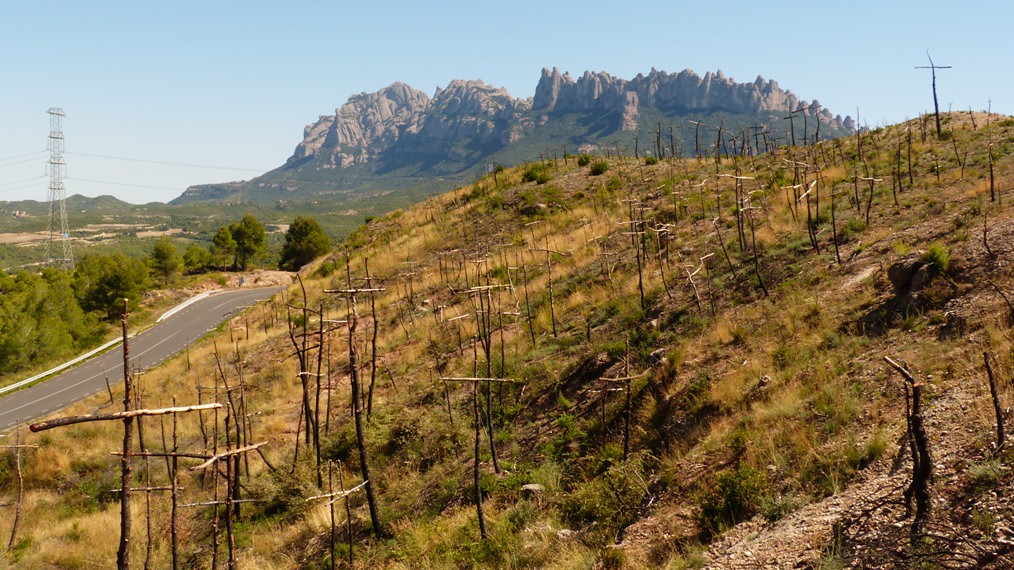
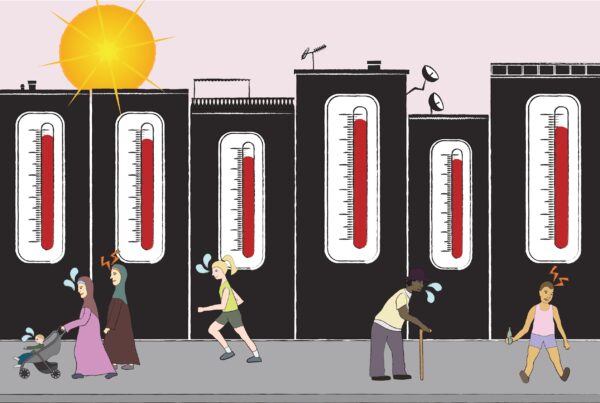
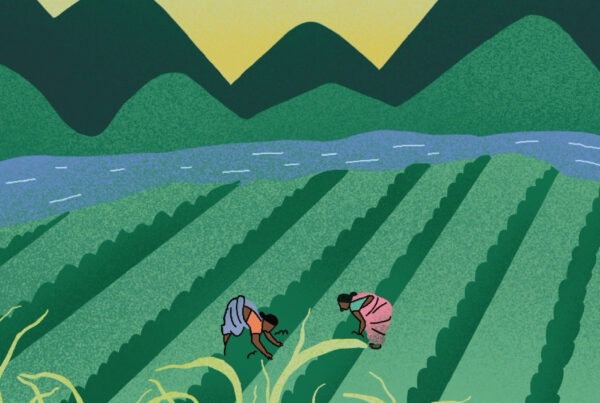
One Comment